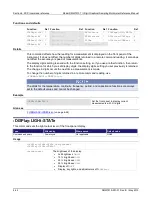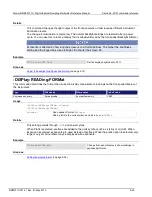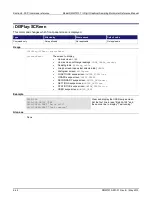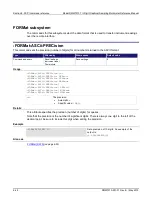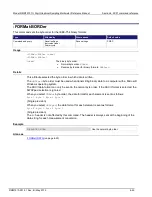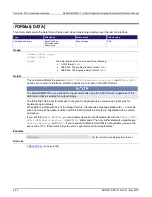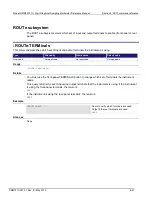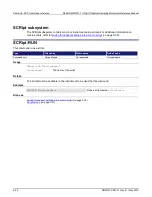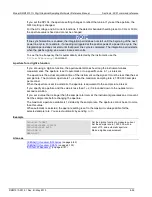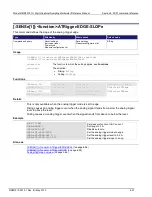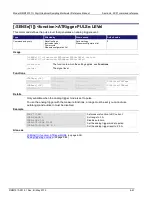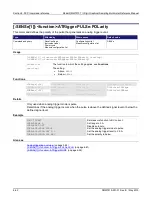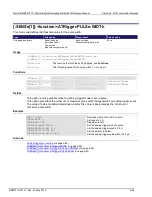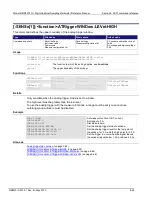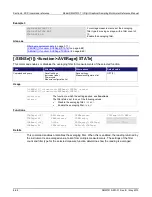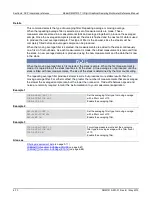
Model DMM7510 7½ Digit Graphical Sampling Multimeter Reference Manual
Section 6: SCPI command reference
DMM7510-901-01 Rev. B / May 2015
6-55
If you set the NPLCs, the aperture setting changes to reflect that value. If you set the aperture, the
NPLC setting is changed.
For the AC voltage and AC current functions, if the detector bandwidth setting is set to 3 Hz or 30 Hz,
the aperture value is fixed and cannot be changed.
If line synchronization is enabled, the integration period does not start until the beginning of the next
power line cycle. For example, if a reading is triggered at the positive peak of a power line cycle, the
integration period does not start until that power line cycle is completed. The integration period starts
when the positive-going sine wave crosses zero volts.
To see the line frequency that is automatically detected by the instrument, use the
:
SYSTem:LFRequency?
command.
Aperture for a digitize function
If you are using a digitize function, the aperture determines how long the instrument makes
measurements. The aperture is set to automatic or to a specific value in 1
µ
s intervals.
The aperture is the actual acquisition time of the instrument on the signal. It must be less than the set
sample rate. The minimum aperture is 1
µ
s when the maximum sampling rate is 1,000,000 samples
per second.
When the aperture is set to automatic, the aperture is equivalent to the sample rate interval.
If you specify an aperture and the value is less than 1
µ
s, it is rounded down to the nearest micro
second resolution.
If you set a value that is longer than the sample rate interval, the instrument generates an error event.
Set the sample rate before changing the aperture.
The maximum aperture available is 1 divided by the sample rate. The aperture cannot be set to more
than this value.
When automatic is selected, the aperture setting is set to the maximum value possible for the
selected sample rate. You select automatic by sending
AUTO
.
Example
DIG:FUNC "CURR"
DIG:CURR:SRATE 1000000
DIG:CURR:APER AUTO
DIG:COUN 10
MEAS:DIG?
Set the digitize function to measure current.
Set the sample rate to 1,000,000, with a
count of 10, and automatic aperture.
Make a digitize measurement.
Also see
[:SENSe[1]]:<function>:NPLCycles
(on page 6-85)
(on page 6-103)
(on page 6-147)




